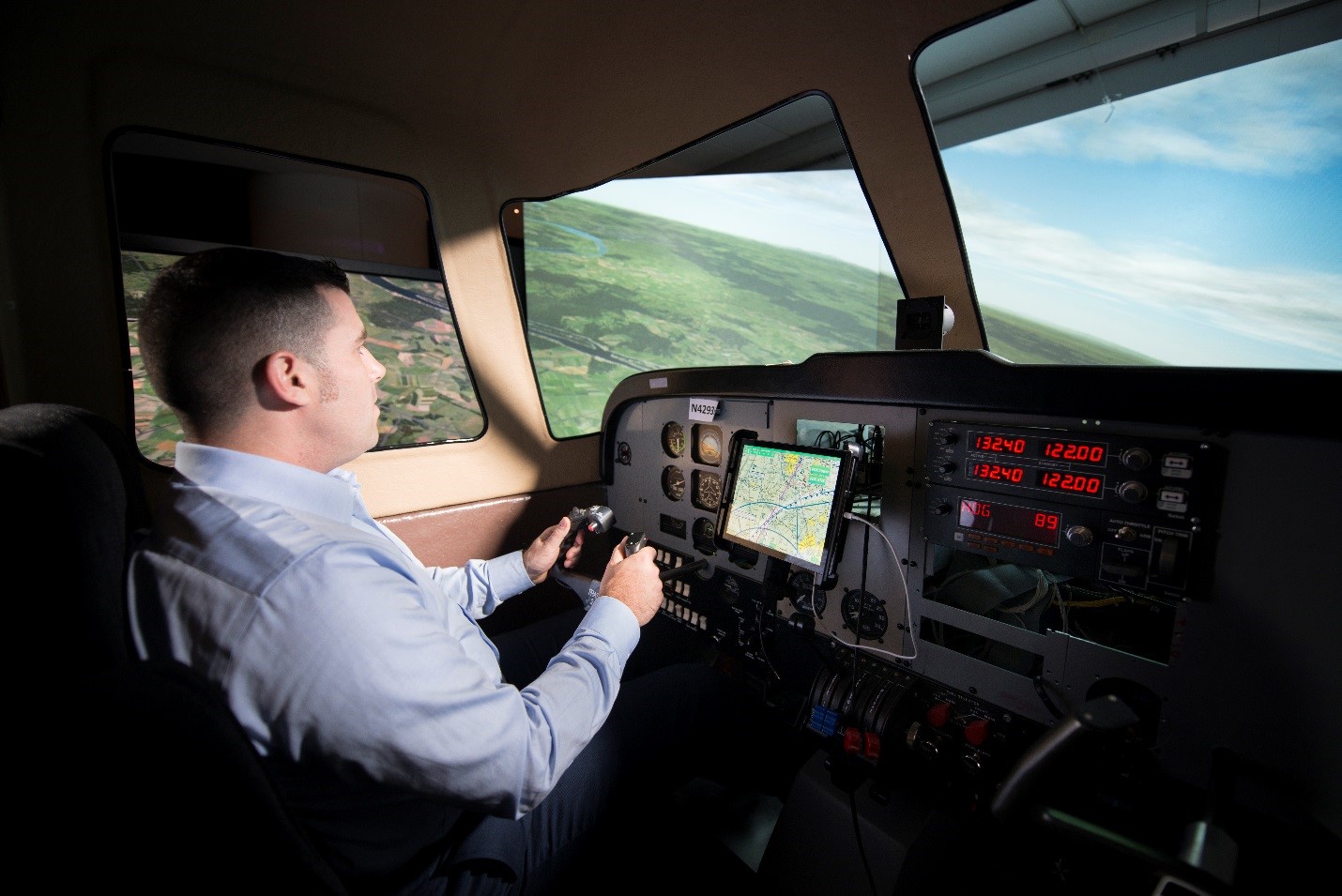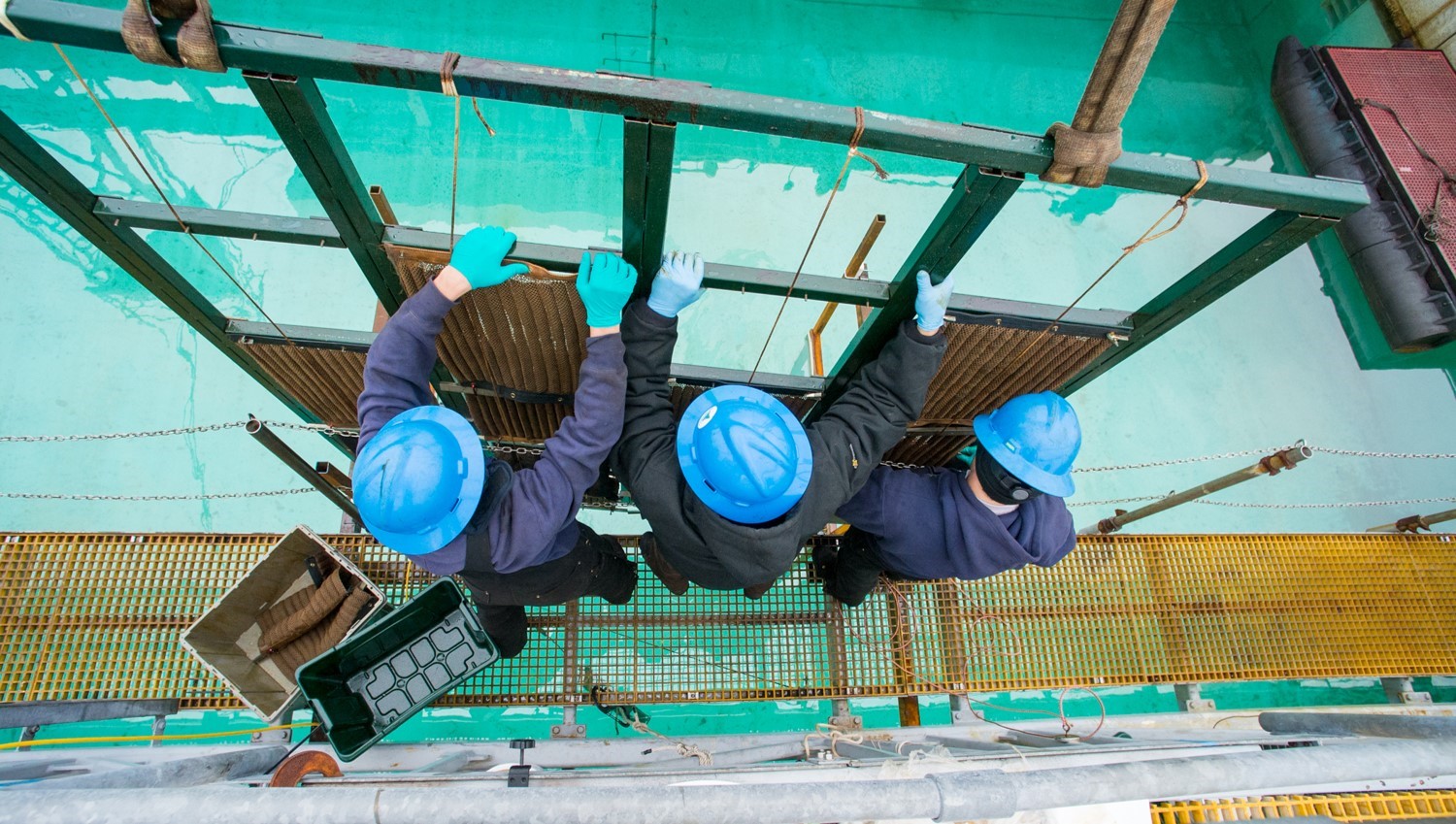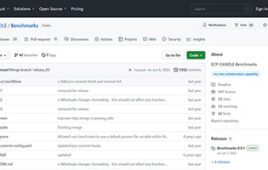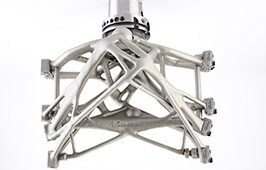
The Digital Copilot, developed by the Mitre Corporation is a set of software algorithms that acts as a cognitive assistant by reducing the solo pilot’s workload. Credit: Mitre Corporation
Each year the editors of R&D Magazine choose among the R&D 100 Awards winners to take home the Editor’s Choice Award. The selection is made based on high scores from the R&D 100 Awards judges, as well as an evaluation by the editors on the innovation itself and how it moves the industry forward with a new contribution in its field. Typically, there is one Editor’s Choice Award given each year, but in 2017 three products were chosen for their innovative progress—the Digital Copilot, the Oleo Sponge and the MPV-800 Multipoint Vibrometer.
“While all of our R&D 100 Awards winners represent truly groundbreaking innovations, our three Editor’s Choice awardees really stood out due to their particularly exceptional and unique contributions to their individual fields,” said Bea Riemschneider, Editorial Director for R&D Magazine. “They are all sure to have a transformative impact in the years and decades to come.”
The three Editor’s Choice awardees were announced at the R&D 100 Awards black tie gala, held Nov. 17 at the Walt Disney World Swan Resort in Orlando, Florida. At that same event, R&D Magazine announced the 100 exceptional innovations selected as the 2017 R&D 100 Awards recipients, as well as 13 Special Recognition Award recipients.
Digital Copilot
The Digital Copilot, developed by the Mitre Corporation, is a set of software algorithms that acts as a cognitive assistant by reducing the solo pilot’s workload. This application infers the pilot’s intent based on the flight context, determines when information is required and automatically provides it to the pilot at the appropriate time through a simple and intuitive speech-based interface.
Statistics show that single-pilot operations—which make up the majority of general aviation flights— are riskier than two-pilot flights. This is due to the high workload associated with flying an airplane solo and the lack of a second pilot to crosscheck decisions.
By understanding what the pilot is trying to do, the Digital Copilot can offer radio frequencies when they are needed, monitor for weather events at the destination airport, or warn the pilot if he/she deviates from safe operations. This product improves safety by delivering some of the benefits of a second pilot to small aircraft. The Digital Copilot solution is low cost, requires no connection to the aircraft and runs on mobile devices. It provides the information pilots need, when they need it, and in a format that is helpful and not distracting.

The Oleo Sponge, developed by Argonne National Laboratory, is a novel absorbent for cleaning up oil spills from water. Credit: Argonne National Laboratory
Oleo Sponge
The Oleo Sponge, developed by Argonne National Laboratory, is a novel absorbent for cleaning up oil spills from water. It can absorb up to 90 times its own weight in oil, is reusable and can collect oil both above and below the water’s surface.
The product is created from low-cost materials by chemically treating a polymer foam such as polyurethane. As manufactured, polyurethane foam is not effective for removing oil from water. This is because the surface of polyurethane is neither oleophilic (oil-attracting) nor hydrophobic (water-repelling). Consequently, when polyurethane foam is immersed in an oil/water mixture, it will absorb both substances more or less equally.
In contrast, Oleo Sponge is simultaneously highly oleophilic and highly hydrophobic, so that it rapidly and selectively absorbs oil from an oil/water mixture. These properties are imparted by performing a two-step surface chemical treatment. In the first step, the foam is impregnated with an ultra-thin, inorganic coating using sequential infiltration synthesis. This coating “primes” the surface for the next step. In the second step, the resulting surface is functionalized with an oleophilic monolayer using silanization, a self-limiting surface chemical reaction.

The MPV-800 Multipoint Vibrometer, developed by Polytec Gmbh, is an optical multichannel vibration measurement system with up to 48 optical phase synchronized channels based on Laser Doppler vibrometry. Credit: Polytec Gmbh
MPV-800 Multipoint Vibrometer
The MPV-800 Multipoint Vibrometer, developed by Polytec Gmbh, is an optical multichannel vibration measurement system with up to 48 optical phase synchronized channels based on Laser Doppler vibrometry.
Non-stationary, transient vibration phenomena of complex structures require the synchronous acquisition of the real-time motion of a relevant, representative number of sample points. In applications with challenging surface conditions like high voltage, delicate structures or soft materials, it is not possible to apply conventional, contact-based vibration sensors. For such applications, the straightforward approach would be to replace every tactile sensor with an optical vibration sensor. Using individual separate vibrometers is typically limited to cases requiring only a small number of sample points due to cost. The first multi-beam approaches with fixed beam configurations were lacking flexibility and only suited for a limited number of specific applications. The concept of the MPV-800 Multipoint Vibrometer allows a flexible, application-specific configuration of individual interferometric sensor heads connected to one central optical unit, which contains one laser system and a multi-channel interferometric detection system.
The R&D 100 Awards have served as the most prestigious innovations awards program in research and development for the past 55 years, honoring pioneers in science and technology. The 2017 R&D 100 Awards took place at the Walt Disney World Swan Resort in Orlando, Florida on Nov. 17, following the two-day R&D 100 Conference, which took place Nov. 16-17.
The R&D 100 Conference was launched in 2015 as an educational event that both celebrates the historic R&D 100 Awards and provides an educational opportunity that is unique for the R&D community. For conference details visit www.rd100conference.com.
For more information about the R&D 100 Awards or R&D Magazine, contact Bea Riemschneider, Editorial Director for R&D Magazine at [email protected] or R&D Magazine Editor Laura Panjwani at [email protected]




